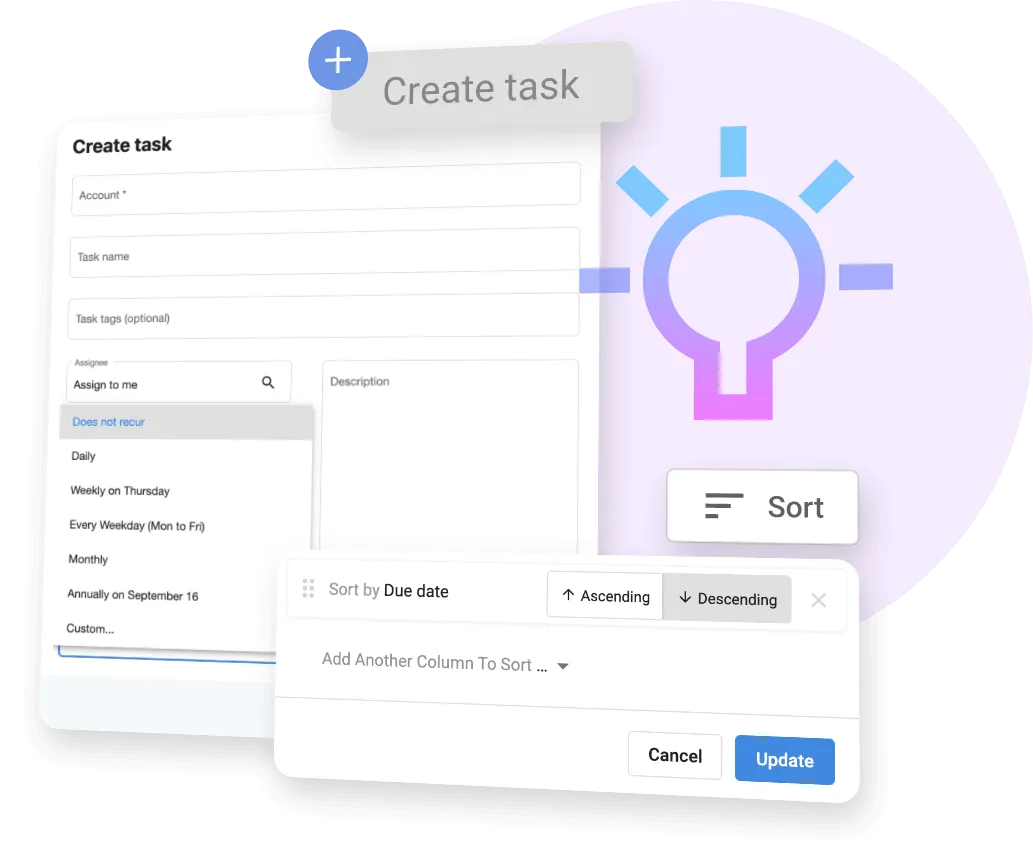There’s no shortage of powerful new automation tools available to digital marketers, but this increase in solutions comes with added complexity.
Without the right marketing automation strategy, all those extra tools—and the data they produce—can be counterproductive, overwhelming business owners rather than helping them grow.
In this blog, we’ll cover everything you need to know about marketing automation integrations for small businesses so that you can set your clients up for success and sell more solutions.
Send highly personalized automated campaigns that turn heads
What Is Marketing Automation Integration?
Marketing automation integration refers to the connection of marketing automation platforms with other digital tools and applications through application programming interfaces (APIs) to enable real-time data sharing. In simple terms, it’s the process of making different digital marketing solutions work together and pull data into a single, easy-to-use interface.
Using AI integration services offers important benefits to businesses:
- Better efficiency: Automates tasks, reducing manual work and saving time.
- Improved data synchronization: Ensures data is updated from all sources regularly or in real-time, ensuring accuracy.
- Enhanced personalization: Applies insights from data to deliver more targeted marketing messages.
- Improved workflows: Creates a single hub for gathering data and managing marketing activities.
- Improved ROI: By providing actionable data in an easy-to-access hub, marketers can more easily track ROI and optimize for greater returns.
Common Marketing Automation Integrations
1. CRM Integration
A feature-rich CRM is essential to any marketing automation strategy since data from other sources can be used by CRMs for AI lead generation and ranking.
To facilitate this data transfer, a bi-directional sync between marketing automation tools and the CRM is needed. By having data sync in both directions, marketing, and sales teams will always be working off the same, up-to-the-minute current data, regardless of whether they’re using the CRM or interacting with a marketing automation tool.
An example of a common CRM marketing automation integration is connecting Marketo—a marketing automation platform from Adobe—with the popular Salesforce CRM.
Want to integrate Vendasta with Salesforce? Syncing between the two powerhouses is easy—just check out this video:
2. Data Enrichment Tool Integration
As their name implies, data enrichment tools pull data from third-party sources to augment CRM data leading to improved lead scoring and nurturing. The more data is available in your AI-powered funnels, the easier it becomes to generate marketing automation ROI.
An example of this type of marketing automation integration is linking Marketo with Clearbit, HubSpot’s B2B data provider. Enriched data in real-time helps marketers better understand their leads, empowering more precise segmentation, improved personalization, and increased conversion rates, leading to a more impactful marketing strategy.
3. Event Marketing Integration
Event marketing is an excellent way to bridge real-world interactions with digital lead generation and nurturing. Event attendees and registrants are often excellent, highly converting lead sources, but it’s important to have a system for capturing their contact information and delivering marketing campaigns before and after the event.
By integrating platforms like Marketo with event registration site Eventbrite, businesses can gather attendee information and seamlessly transfer it to be used in marketing campaigns. Pre-event, personalized messaging can bolster and maintain interest to boost attendance numbers, and after, follow-up automated email sequences can kick in.
4. Other Potential Integrations
The integrations we’ve looked at so far are just some of the most common ones—but just about any digital marketing tool in your arsenal can be a good candidate for integration with your CRM or marketing automation platform. These include:
- Webinar platforms
- Survey and questionnaire tools
- AI or live chat platforms
- Social media platforms
By centralizing data from many sources, businesses and AI agencies can gain a comprehensive view of customer interactions and preferences. Put simply, the better your data, the more effective your messaging will be, from email marketing to content marketing and beyond. The result? Better marketing automation ROI.
Benefits of Marketing Automation Integration
If you’re running an AI marketing agency or consultancy, positioning the value of marketing automation integration to your local business clients can be difficult—especially if they’re on the less tech-savvy end of the spectrum. But the benefits of effective use of integrations are vast:
Reduce Manual Data Entry and Human Errors
Marketing automation integration drastically minimizes the need for manual data entry, which makes human errors far less likely to arise. By automating data transfer between systems, businesses can be confident that information is accurate and current. This is consequential for the bottom line: good data is needed for effective decision-making.
Increase Productivity by Automating Tasks
Because agency automation streamlines many time-consuming marketing processes, productivity gets a boost.
Routine data entry tasks, email campaign setup and management, and standard follow-ups can all largely be automated, allowing busy entrepreneurs and stretched teams to allocate their time to higher-value activities.
Tip: Integrating Vendasta can help you automate all business operations. Vendasta’s AI platform customizes content and insights to improve client outcomes and drive productivity.

Easily Implement Integrations Without It Support
Thanks to modern user-friendly interfaces and easy-to-implement APIs, marketers without IT or engineering experience can often set up integrations.
This ease of implementation means that teams can quickly and efficiently connect different tools and systems and jump right into using them, so both sales and marketing can start benefiting right away.
Provide a Unified Customer View Across Teams
Integrations and AI for small business should make your client’s lives easier. A big part of this value is the creation of a single source of truth when it comes to customer and marketing data.
Using automation to create a centralized data repository ensures that everyone who requires data can confidently and easily access it. This fosters more confident and data-informed decision-making, saves time, and of course, makes it easier to focus on delivering impactful, ROI-boosting campaigns.
Building Advanced Marketing Automation Integrations
Let’s consider an example of how you might use an advanced integration using Slack to support both marketing and sales teams at your AI startup.
Imagine you build a website with a lead magnet and a form that pushes contact data to your CRM and automatically assigns them to a customer segment based on interests and on-site behaviors.
Then, when your CRM automated lead-scoring system identifies the lead as high-value or likely to convert soon, a notification can be sent to your sales team via Slack triggering see real-time and notify your sales team via Slack enabling them to jump in and close the sale—all without manual intervention.
This real-time integration streamlines communication and ensures that leads are promptly followed up on, all while keeping marketing and sales teams on the same page thanks to the use of a single centralized dashboard.
These kinds of advanced automation integrations can help your agency—and your clients—run like well-oiled machines.
An End-To-End Approach
We’ve discussed a lot of interesting ways to make life easier through integrations, but to implement marketing automation best practices and reap the most bottom-line benefits, it’s important to think in terms of end-to-end automation.
Consider every part of your marketing and sales process: where are the data bottlenecks? What can be simplified through automation? Then, identify tools and platforms that enable advanced workflow automation from start to finish. Ideally, the platforms you use should be flexible enough to manage connections and triggers between your central dashboard and all of your other marketing tools. Vendasta Automations and Workato are good candidates, offering nearly endless options for custom automations.
How to Get Started With Marketing Automation Integration
Follow this roadmap to revamp your approach to marketing with automations. If you plan on making money with AI by selling automation integration services to clients, this same approach can be applied across different industries.
Audit Your Current Tech Stack and Prioritize Integrations
Start by taking stock of all your marketing and sales tools and identifying opportunities for integration with your marketing automation platform. Then, check if pre-built integrations are available or if custom integrations will be needed—this can take a bit more work since you need to find a tool to create the custom sync.
Finally, prioritize integrations based on their potential benefit and ease of implementation. You don’t need to launch everything at once, so create a timeline based on priorities.
Data Mapping and Field Alignment Considerations
Next, consider which specific types of information should be shared and how it will move between systems. Plotting this out is referred to as data mapping, but since conflicts can arise, it’s equally important to set rules for how differences between systems are handled.
Chances are, you’re not starting from scratch, and you may already have valuable data in different silos. Consider how you’ll migrate this historical data, and create a plan for keeping everything organized and up-to-date in the future.
Set up Training for Successful Adoption
There’s no shortage of AI business ideas out there, including powerful new integrations, but they can only deliver results if everyone on your team is on board.
If you work with a larger team or you’re implementing marketing automation integrations for clients, it’s important to conduct a needs analysis for every potential user to understand the gaps in their knowledge. Then, develop training materials that can be accessed at any time, like guides and videos, to ensure adoption. Training workshops are also a great idea, particularly when launching a new major integration.
Measuring ROI of Marketing Automation Integrations
The goal of integrations is to boost ROI, so it’s essential to measure the impact of any new automations.
To do this, you first need to know which metrics matter. For example, these might be leads, revenue, efficiencies, cost savings, or conversions. Start by determining your starting benchmarks: this is key to gauging the impact of any new solutions.
After your integration has been in use for some time, you can check against these benchmarks to calculate the ROI and impact on your business goals. The golden rule of digital marketing still applies here: keep an eye on ROI and continuously optimize to drive better results over time.


